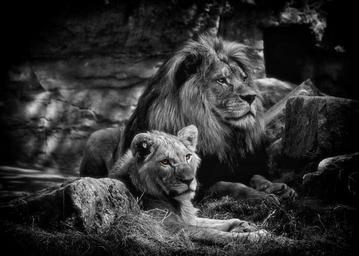Introduction
In the ever-evolving world of art, portrait photography has become a lively canvas that shows not only the essence of individuals but likewise the myriad styles and techniques offered to artists. The exploration of eclectic portrait styles opens doors to innovative opportunities where personal expression and artistic variety intermingle. This post dives deep into the fascinating realm of portrait photography, analyzing numerous styles such as self-portrait photography, contemplative photography, and more. We'll also discuss how these artistic expressions can improve interior decoration, challenge identity in art, and add to the larger discourse around art photography.
What is Eclecticism in Portrait Photography?
Eclecticism refers to the merging of various designs, concepts, and affects into a cohesive whole. In portrait photography, this indicates using diverse methods-- from traditional techniques to modern methods-- to produce images that resonate with viewers on numerous levels. This creative diversity enables photographers to cater to a broad audience while expressing their special perspectives.
Aesthetic Photography: The Charm of Portraits
What Defines Visual Photography?
Aesthetic photography is all about developing visually pleasing images that evoke feeling and provoke idea. In pictures, this style emphasizes structure, color harmony, and lighting to capture the beauty of the subject.
Key Functions of Visual Photography
- Composition: The arrangement of elements within a frame plays a crucial role. Color Palette: Harmonious colors can improve psychological responses. Lighting Techniques: Natural light versus studio lighting can considerably modify mood.
Emphasizing Self-Expression through Aesthetics
In aesthetic portraits, self-expression becomes critical. Artists often utilize colors and compositions that resonate with their inner sensations-- making each photo a reflection of their identity.
How Does Visual Photography Enhance Picture Styles?
By incorporating visual principles into different portrait styles, photographers can elevate their work from simple documentation to evocative storytelling. Whether it's through soft pastel tones or strong contrasts, visual options shape audience perceptions dramatically.
Self-Portrait Photography: An Intimate Exploration
What is Self-Portrait Photography?
Self-portrait photography includes recording one's image utilizing numerous methods and styles. It provides an intimate take a look at the photographer's mind while allowing for innovative freedom.

Historical Context
From Frida Kahlo's expressive self-portraits to contemporary Instagram influencers catching their lives, this genre has actually progressed substantially over time.
Why Engage in Self-Portrait Photography?
Self-portraiture supplies an opportunity for introspection. It permits artists to check out styles like identity, vulnerability, and self-perception-- eventually cultivating deeper connections with their audience.
Contemplative Photography: The Art of Reflection
Understanding Reflective Photography
Contemplative photography invites viewers to pause and review images presented before them. It stresses mindfulness-- encouraging both the professional photographer and viewer to engage deeply with each shot.
Techniques Used in Contemplative Photography
- Slow Exposure: Recording motion over time. Minimalism: Concentrating on simplicity. Natural Elements: Incorporating landscapes or environments that resonate emotionally.
How Can Contemplative Photography Impact Picture Styles?
By infusing contemplative practices into picture photography, artists can develop images that welcome viewers into a moment-- a photo frozen in time that stimulates ideas about presence and identity in art.
Identity in Art: Unpacking Personal Narratives
How Does Identity Shape Portrait Styles?
Identity plays a critical function in shaping creative expression. Photographers typically bring into play their backgrounds-- cultural heritage, individual experiences-- to craft portraits showing who they are or who they desire be.
https://blogfreely.net/sivneydvio/creating-an-ethereal-atmosphere-with-wet-textures-and-shadowsExploring Diverse Identities Through Portraits
- Cultural representation Gender identity Socio-economic backgrounds
Why is Identity Important in Eclectic Portrait Styles?
By welcoming diverse identities within eclectic picture designs, artists enrich the narrative landscape of modern art-- difficult stereotypes while promoting inclusivity.
Faceless Pictures: Privacy Fulfills Expression
What are Faceless Portraits?
Faceless portraits concentrate on elements aside from facial functions-- highlighting body movement or surroundings rather. This style uses privacy while still conveying emotion.
Techniques Used in Developing Faceless Portraits
- Blurring faces Using props or environments as focal points Emphasizing hands or silhouettes
The Function of Faceless Pictures in Exploring Identity
Faceless portraits can function as effective tools for exploring themes around anonymity versus uniqueness-- enabling audiences to predict their analyses onto topics without specified features.
Abstract Pictures: Breaking Boundaries
What Makes up Abstract Portraiture?
Abstract portraits deviate from traditional representations by concentrating on shapes, colors, and textures instead of reasonable representations. This style invites experimentation while pressing borders within art forms.
Benefits of Abstract Approaches
- Encourages creativity beyond realism. Invites emotional interpretation instead of accurate observation.
How Do Abstract Pictures Suit Eclectic Styles?
Abstract pictures contribute depth by challenging norms within portraiture-- paving paths for new discussions around representation and understanding in art practices today.
Fine Art Photography: The Crossway of Artistry and Technique
Defining Fine Art Photography
Fine art photography goes beyond business purposes-- it embodies artistry at its core. Photographers often go for visual benefit over simple paperwork when catching subjects' likenesses.

Characteristics of Art Photography
Artistic Vision Technical Proficiency Emotional ImpactWhy is Fine Art Vital Within Diverse Portrait Styles?
Fine art photography enhances diverse picture styles by raising technical abilities along with innovative impulses-- a fusion driving development across disciplines today!
Exploring Diverse Picture Styles for Artistic Diversity
The amalgamation of numerous techniques leads us back into varied worlds such as visual options; self-exploration via self-portraits; contemplative reflections; stories formed by identity; anonymity embraced through facelessness-- and limits pushed further with abstraction-- all coalesce under this umbrella called eclecticism!
As professional photographers dive deeper into these designs while intertwining individual stories alongside more comprehensive societal themes-- the result becomes stunning visual tapestries showcasing artistry's power!

FAQs About Exploring Eclectic Picture Designs for Creative Diversity
1. What are some typical types of picture styles?
There are numerous types consisting of timeless portraits (traditional), lifestyle pictures (capturing everyday moments), candid shots (unposed), abstract portraits (non-representational), faceless pictures (highlighting privacy), amongst others!
2. How does one choose a particular portrait style?
Choosing depends mostly on your creative vision! Consider what feelings you want to communicate; recognize styles crucial personally or culturally-- and enable those decisions assist your stylistic approach moving forward!
3. Can I blend different portrait styles?
Absolutely! Blending different components from differing genres creates unique outcomes-- and embodies what being diverse genuinely indicates! Don't shy away from exploring till you find what resonates most highly within yourself!
4. Is expert devices needed for quality photographs?
While high-end gear certainly assists attain certain outcomes-- it's not compulsory! Creativity frequently outweighs technical requirements; remember enthusiasm fuels artistry above all else!
5. What function does lighting play in portrait photography?
Lighting considerably affects mood & & tone communicated through imagery! Explore natural light vs artificial setups permits expedition throughout numerous atmospheres enhancing general storytelling capacity behind photographs captured!
6. Exist workshops readily available focused particularly on portraiture?
Yes! Lots of companies use workshops dedicated entirely towards developing abilities related specifically towards capturing engaging pictures-- inspect regional community centers/art schools online platforms like Meetup.com too see what's available near you!
Conclusion
Exploring eclectic picture styles for creative variety not only widens our understanding of what makes up reliable representation however likewise promotes deeper connections in between artist & & audience alike! Whether through aesthetic options made within structures; self-exploration by means of personal narratives woven throughout self/other representations-- or engaging contemplatively with subjects represented-- the possibilities remain unlimited when imagination streams freely! As we continue delving into these diverse realms surrounding human experience caught aesthetically-- it becomes clear simply just how much richness exists waiting patiently behind every lens pointed external toward life unfolding constantly around us!
So grab your camera-- or simply go back & & observe carefully next time you discover yourself amidst captivating scenes begging capture; there lies magic waiting patiently just outside reach ... beckoning us onward towards finding our realities concealed beneath layers obscured beneath surface looks alone!